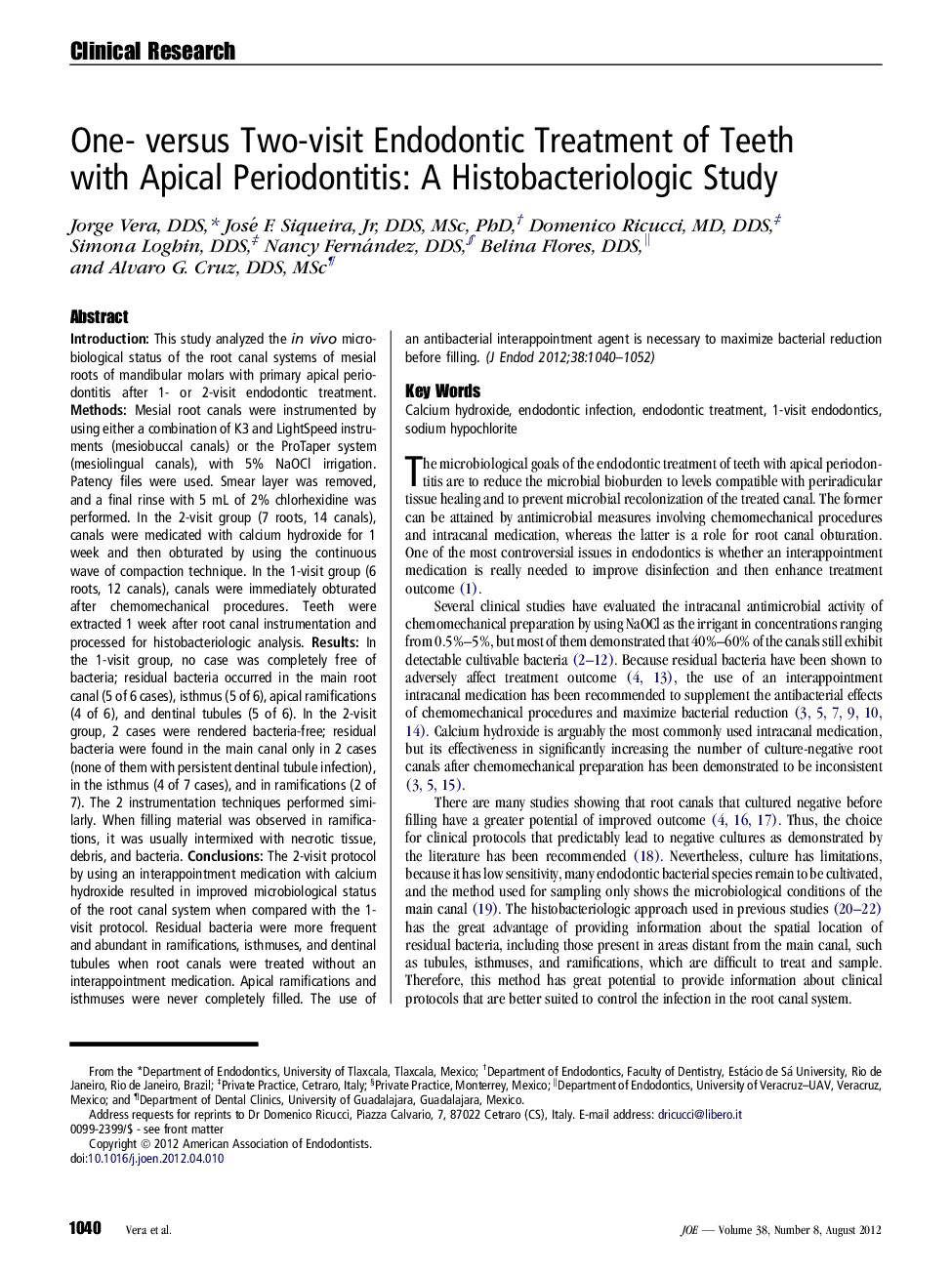| Article ID | Journal | Published Year | Pages | File Type |
|---|---|---|---|---|
| 3150404 | Journal of Endodontics | 2012 | 13 Pages |
IntroductionThis study analyzed the in vivo microbiological status of the root canal systems of mesial roots of mandibular molars with primary apical periodontitis after 1- or 2-visit endodontic treatment.MethodsMesial root canals were instrumented by using either a combination of K3 and LightSpeed instruments (mesiobuccal canals) or the ProTaper system (mesiolingual canals), with 5% NaOCl irrigation. Patency files were used. Smear layer was removed, and a final rinse with 5 mL of 2% chlorhexidine was performed. In the 2-visit group (7 roots, 14 canals), canals were medicated with calcium hydroxide for 1 week and then obturated by using the continuous wave of compaction technique. In the 1-visit group (6 roots, 12 canals), canals were immediately obturated after chemomechanical procedures. Teeth were extracted 1 week after root canal instrumentation and processed for histobacteriologic analysis.ResultsIn the 1-visit group, no case was completely free of bacteria; residual bacteria occurred in the main root canal (5 of 6 cases), isthmus (5 of 6), apical ramifications (4 of 6), and dentinal tubules (5 of 6). In the 2-visit group, 2 cases were rendered bacteria-free; residual bacteria were found in the main canal only in 2 cases (none of them with persistent dentinal tubule infection), in the isthmus (4 of 7 cases), and in ramifications (2 of 7). The 2 instrumentation techniques performed similarly. When filling material was observed in ramifications, it was usually intermixed with necrotic tissue, debris, and bacteria.ConclusionsThe 2-visit protocol by using an interappointment medication with calcium hydroxide resulted in improved microbiological status of the root canal system when compared with the 1-visit protocol. Residual bacteria were more frequent and abundant in ramifications, isthmuses, and dentinal tubules when root canals were treated without an interappointment medication. Apical ramifications and isthmuses were never completely filled. The use of an antibacterial interappointment agent is necessary to maximize bacterial reduction before filling.
